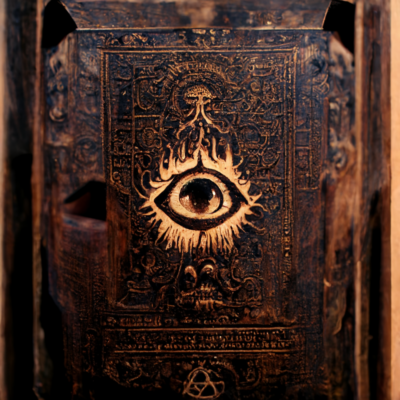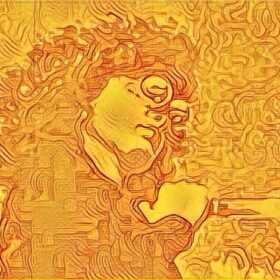News, Trail of Cthulhu
Thirteen Things Tucked Into That Grimoire

- A blurry photograph of the room where the investigators found the tome. Shadow shapes that might be the result of a double exposure or some damage to the photographic plate are visible, as if the room is haunted. Photography coupled with Chemistry might replicate the experiment and yield more information.
- The binding of the book is infested with a greenish fungus that stains the investigator’s fingers, and will not wash off no matter how hard they scrub. Over time, the spores spread to everything the investigator owns. Only fire cleanses. Biology or Medicine discovers the infection.
- A cryptic set of notes, written in a cypher composed of groups of three numbers. Cryptography guesses that the book itself is the key to the code – each set of numbers points to a page, paragraph and word in the book. Decoding the message will require reading through the whole book.
- A playbill from a local theatre. Scribbled on the bill is a time and date in the future; did the owner of the grimoire meet some co-conspirator at the theatre, and arrange a rendezvous? Time for some Credit Rating or Art History to blend in…
- The dried eggs of a species of insect hitherto unknown to science. The eggs hatch into larvae if they fall from the book. If only you were playing Esoterrorists, you could use Forensic Entomology to investigate
- A bookmark of dried leather. On closer examination, it’s a human finger, the finger-bones removed and the flesh and muscle dried and squashed flat. The fingernail is still intact. Forensics pulls a usable fingerprint.
- A set of folded pages, apparently removed or fallen from the book. However, the investigators soon realise that the matching pages are still in the book, but with slightly different text. Are the loose pages forgeries – or has the book already been altered and rebound? Craft or Library Use and a lot of careful analysis gives an answer.
- A card with a hand-written prayer, and a fragment of lace taken from the burial robe of a Christian martyr. Clearly, the owner of the book was trying to contain or counter some malign influence. Theology discerns subtle references in the names of the saints invoked
- A receipt from an occult bookstore – indicating that the owner of the tome bought another volume at the same time. Bargain or Intimidation extracts more information from the seedy bookhound.
- A folded road map of a nearby region, with a spot circled in red ink. Outdoorsman finds the exact location, which is in the middle of a perilous stretch of broken ground.
- A set of astronomical tables, describing tide times and the visibility of certain stars above the horizon. Astronomy predicts the time of the convergence.
- A few hand-drawn sketches of a vaulted church ceiling, doubtless admiring its beautiful artistry – or noting the hiding place of some relic. Architecture identifies the church.
- A scrawled warning note, urging the discoverer not to read the book. Explosives spots the vial of thermite and the cunning ignition mechanism that will be activated if the book is moved.
Trail of Cthulhu is an award-winning 1930s horror roleplaying game by Kenneth Hite, produced under license from Chaosium. Whether you’re playing in two-fisted Pulp mode or sanity-shredding Purist mode, its GUMSHOE system enables taut, thrilling investigative adventures where the challenge is in interpreting clues, not finding them. Purchase Trail of Cthulhu, and its many supplements and adventures, in print and PDF at the Pelgrane Shop.


